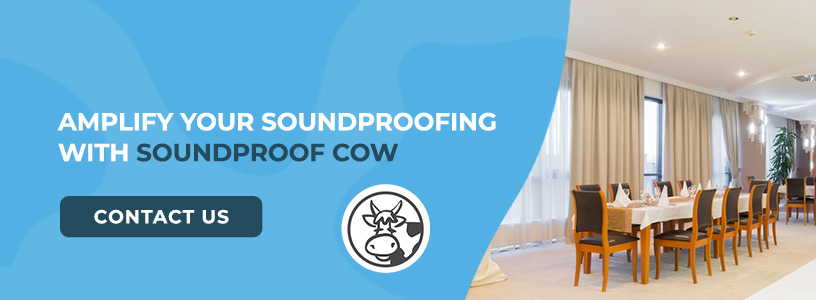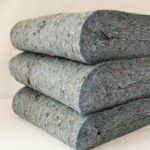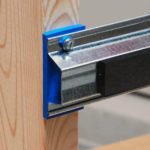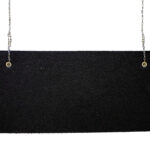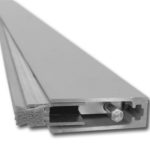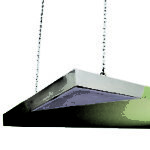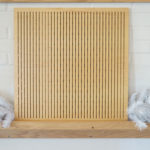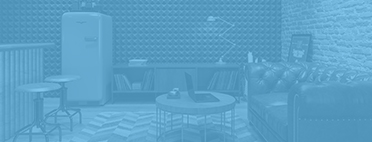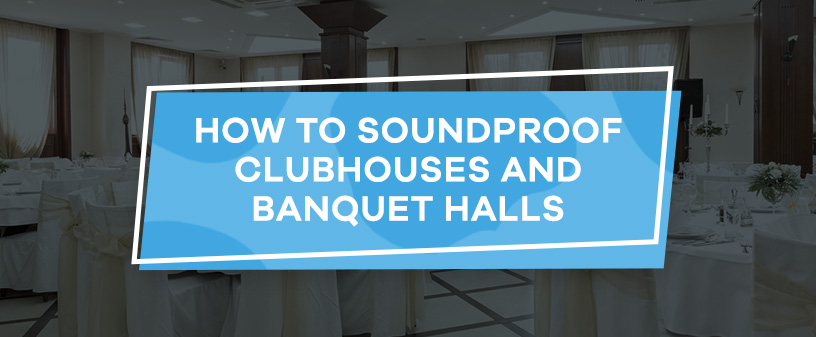
Clubhouses and banquet halls are places of camaraderie, conversation and celebration. Excessive noise or poor acoustics can dampen the festivities.
Luckily, there is a solution for suboptimal sound. Some well planned soundproofing strategies can enhance the ambience of your event space and leave your guests with fond memories instead of ringing ears.
Soundproofing your venue helps to ensure an unforgettable guest experience. It balances ambience with acoustic control. The right applications can reduce echoes, ensuring a more enjoyable environment for socialization. A venue that has been properly attended to for sound can be enjoyed by guests and reduces the likelihood of bothering neighbors.
You can soundproof a banquet hall or clubhouse with these effective strategies and materials.
1. Identify the Noise Source and Type
Noise issues in banquet halls and clubhouses often stem from multiple sources. Contributors include loud music, crowd noise, kitchen equipment, HVAC systems and foot traffic. These spaces face two types of noise challenges — airborne noise and impact noise.
Airborne noise, like music or voices, travels through the air. It can penetrate walls, ceilings and floors, disturbing adjacent spaces. Impact noise happens when objects collide, creating vibrations that travel through a structure. Think footsteps or furniture moving. The most effective soundproofing addresses both types of noise.
2. Soundproof Banquet Hall or Clubhouse Walls and Ceilings
Soundproofing a commercial clubhouse or banquet hall usually means combining several strategies.
Sound Absorption Is Best for Reducing Reverberation
Sound-absorbing materials reduce reverberation and echo within a space. In other words, they improve acoustics. Choose sound absorption for improved speech clarity and better sound quality in your venue. We recommend these high-performance products:
- Acoustic panels: These panels use foam or mineral wool to absorb sound waves. With various colors and styles, you can customize your clubhouse or banquet hall wall paneling layout. The possibilities are endless. Popular options include fabric-wrapped acoustic panels, wood acoustic panels or custom art acoustic panels.
- Acoustic clouds: Our Udderly Quiet® Acoustic Cloud attaches to the ceiling and covers a large surface area, making it ideal for a banquet hall soundproofing design.
- Hanging baffles: A hanging baffle is smaller than an acoustic cloud. You can suspend it from a ceiling or wall to reduce ambient noise. Our hanging baffles use foam to trap sound waves, transforming the energy into heat.
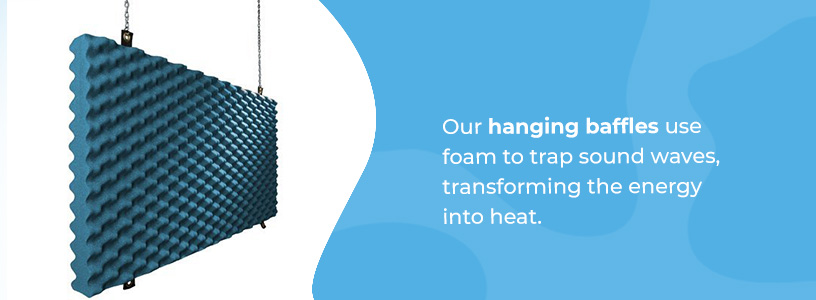
When selecting materials, consider the noise reduction coefficient (NRC) rating. This rating shows how well the material absorbs sound. Opt for materials with an NRC rating of 0.8 or higher.
Fire rating is another important consideration for commercial venues. To meet safety regulations, look for products with a Class A fire rating.
Sound Isolation Is Best for Preventing Sound Transmission
While sound absorption improves sound in a room, sound isolation stops noise from escaping. This method creates a physical barrier to prevent sound transmission. A product’s sound transmission class (STC) rating indicates its sound-blocking ability. Materials with higher STC ratings are ideal for commercial spaces like banquet halls.
Effective sound isolating or blocking materials include:
- Soundproofing insulation: Premium Quiet Batt® Soundproofing Insulation blocks and absorbs sound. The dense material absorbs sound energy, converting it into heat. It also adds mass and density, preventing sound from passing through.
- Mass-loaded vinyl (MLV): Like insulation, MLV adds dense mass to walls and ceilings to block sound waves. MLV has STC ratings of between 26 and 32. Add this easy-to-apply material between drywall.
- Acoustical sealant: Sound can creep in through cracks or joints in ceilings and walls. Filling these gaps with high-quality acoustic sealant prevents sound bleed.
Wall and Ceiling Decoupling Is Best for New Constructions
Decoupling is based off the idea of sound isolation. It involves separating wall or ceiling surfaces and adding mass between the layers.
Decoupling techniques include adding:
- Double-stud walls: A double-stud wall consists of two drywall sheets with a gap between, fastened to separate parallel studs.
- Staggered stud walls: A staggered stud wall saves space by staggering the studs.
- Resilient clips and hat channels: This method uses a single set of studs. The clips mount to the studs, supporting horizontal metal channels with rubber isolation.
- Soundproofing insulation: Adding mass between the drywall surfaces helps to reduce sound transmission.
Our isoTRAX® Soundproofing System simplifies wall decoupling. It includes everything you need for the project, including sound isolation rails and sound-deadening pads.
3. Soundproof Banquet Hall or Clubhouse Floors
Controlling floor impact noise is essential for multilevel venues. Footsteps or dropped objects from above can disrupt the sound quality below. Potential soundproofing solutions include:
- Rugs or carpets: Carpeting can give your venue a new look while absorbing sound. If you prefer harder flooring materials, consider adding an area rug to high-traffic zones.
- Underlayment: If you have subfloor access, you can install acoustic flooring underlayment between the subfloor and surface to dampen impact noise.
- Floor joist isolators: This method suits new builds or renovations. These isolators fit around floor joists, blocking vibrational noise and improving the floor’s STC rating.
- Sound insulation: Add sound insulation between floor joists to dampen vibrations and traveling noise.
4. Soundproof Banquet Hall or Clubhouse Doors
Noise can sneak through the gaps around or under doors. Sealing these gaps is a simple, cost-effective way to stop sound from getting in or out. Try one or a combination of these options:
- Door sweeps: A Quiet Door™ Automatic Door Sweep creates a tight seal at the bottom of the door. It makes a sound barrier while increasing the door’s thermal performance by eliminating the gap.
- Perimeter seals: Fit Quiet Door™ Perimeter Seals around doors. You can use these together with a door sweep for ultimate soundproofing power.
- Sound sealant: Fill edges or cracks with OSI® Pro-Series SC-175 Acoustical Sound Sealant.
5. Soundproof Banquet Hall or Clubhouse HVAC and Plumbing
The whirring of AC fans or the gurgling of plumbing can interfere with events at your venue. To address these noises, you can:
- Dampen vibrations: Apply a sound-deadening material to the inside or outside of your HVAC unit. The right product will lower vibrations, stopping them from traveling along the ductwork.
- Reduce ductwork noise: Use a fire-resistant foam, like our Udderly Quiet™ product line, to absorb sound inside ductwork.
- Wrap pipes: Our Quiet Wrap™ Pipe Soundproofing Wrap is the perfect companion for noisy pipes. Wrap it completely around plumbing pipes using a simple peel-and-stick adhesive.
- Fill the empty wall gaps: If you have access to pipes inside the drywall, fill the wall cavity with Quiet Batt® Soundproofing Insulation.
Step Up Your Soundproofing With Soundproof Cow
At Soundproof Cow, we provide great soundproofing materials for spaces just like yours. We understand that each clubhouse and banquet hall has a unique acoustic fingerprint, so we will start with a free acoustic analysis to pinpoint your needs and identify the most effective soundproofing products and sound absorption materials.
Need help? Connect with us to discuss your project with our knowledgeable team.


